7+ Hazard Communication Plan Examples
The Hazard Communication Plan serves as a vital guide for navigating complex relationship dynamics. It provides a detailed exploration of the intricacies of communication, specifically highlighting various communication examples that can lead to misunderstandings and conflict in relationships. This comprehensive guide delves into the nuances of verbal and non-verbal cues, offering insights on how these can inadvertently contribute to emotional distance and examples in miscommunication. By understanding these examples, couples can develop more effective communication strategies, leading to healthier, more resilient relationships.
Download Hazard Communication Plan Bundle
Hazard Communication Plan
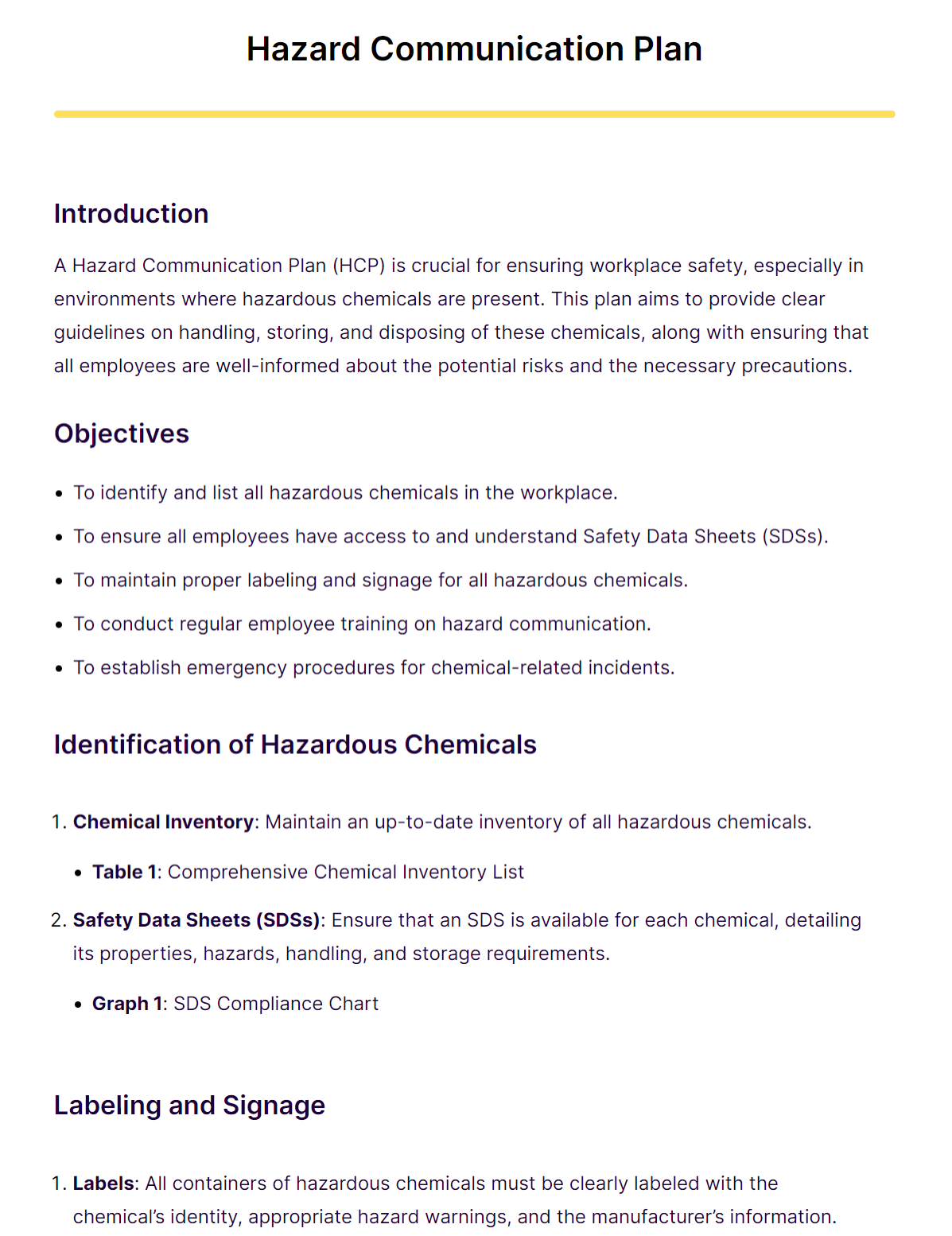
The Hazard Communication Plans tailored to different workplace scenarios. It provides comprehensive guidelines for handling, storing, and disposing of hazardous chemicals safely. The plans emphasize the importance of clear labeling, accessible Safety Data Sheets (SDSs), and proper employee training to ensure workplace safety. These examples serve as a valuable resource for organizations looking to implement or refine their own hazard communication strategies.
Hazard Communication Program Plan
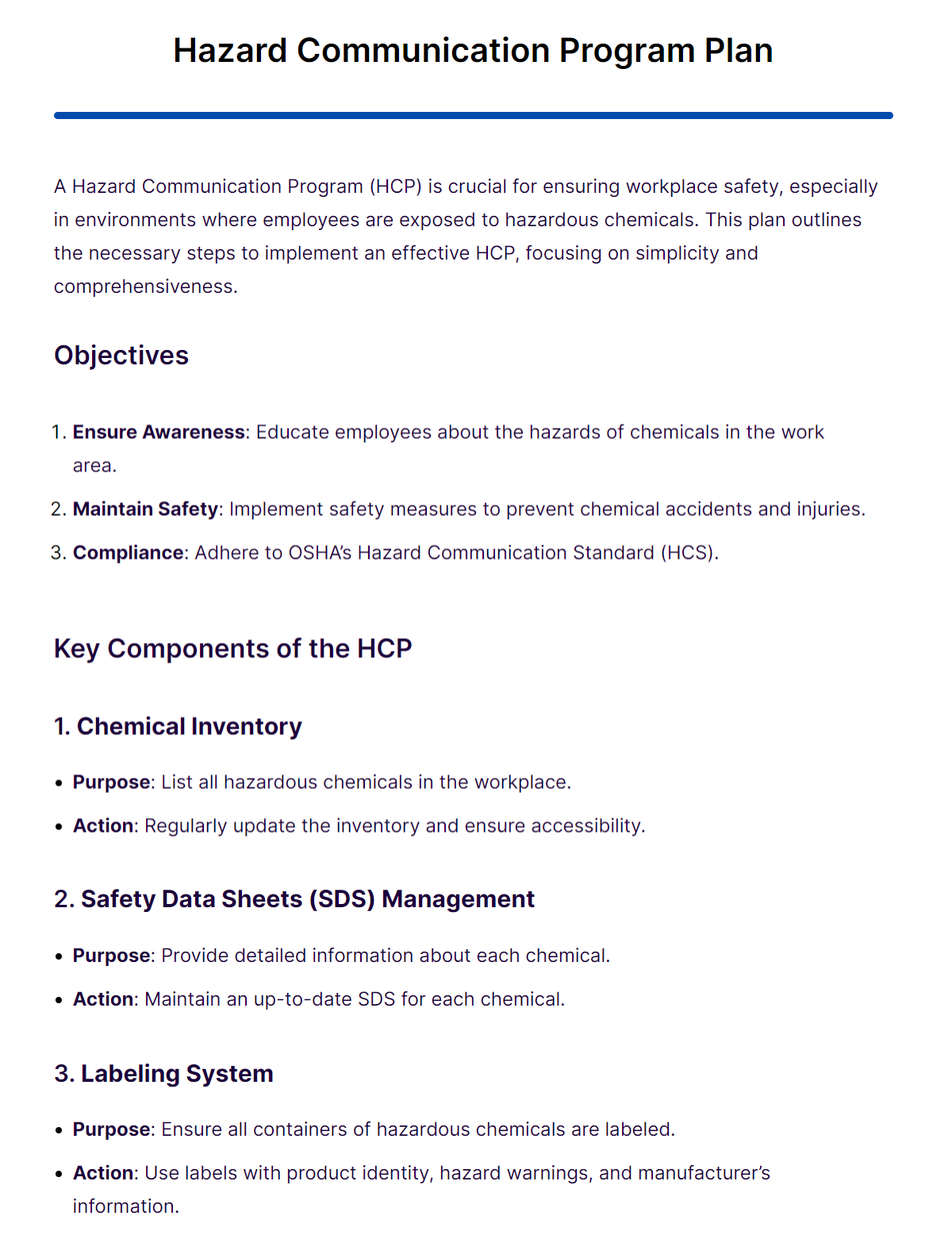
The Hazard Communication Program Plan is a detailed resource for workplace safety, focusing on managing hazardous chemical exposure. The plan encompasses vital elements such as chemical inventory management, safety data sheets, labeling systems, employee training, exposure control, and emergency response procedures. It emphasizes compliance with OSHA’s standards, aiming to educate and protect employees from chemical hazards. This guide is an essential tool for creating a safer workplace environment.
Hazard Communication Plan in Construction
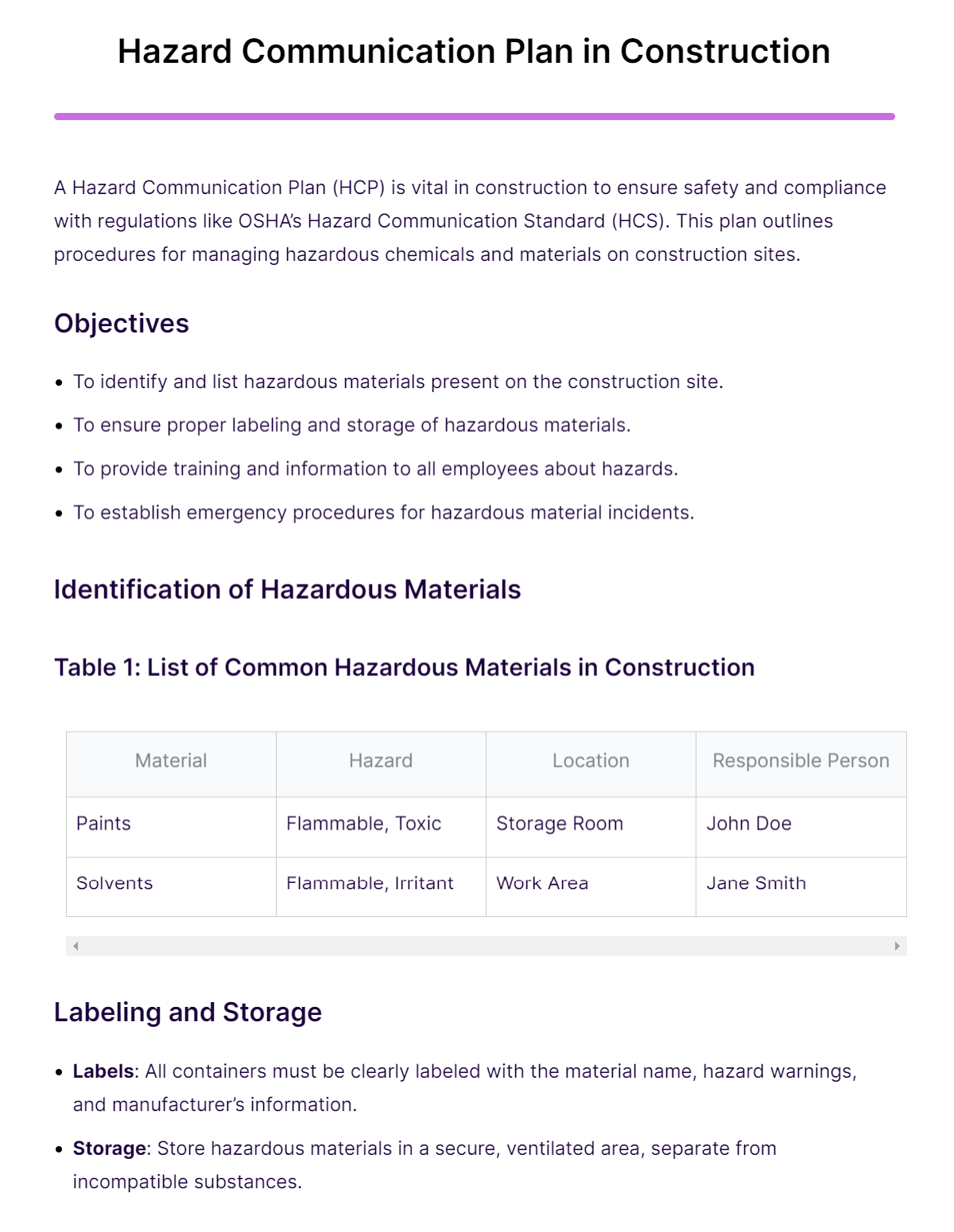
The article Hazard Communication Plan in Construction focuses on the critical aspects of hazard communication within the construction industry. It outlines the significance of developing a robust Hazard Communication Plan to ensure workplace safety and compliance with regulations. The guide includes practical examples, strategies for effective communication skills of hazards, and methods for training employees about the potential risks associated with construction materials and chemicals. This resource is essential for construction professionals seeking to enhance safety protocols in their projects.
Hazard Communication Plan HR Template
Construction Hazard Communication Plan Template in Word, Google Docs
Hazard Communication Plan Example
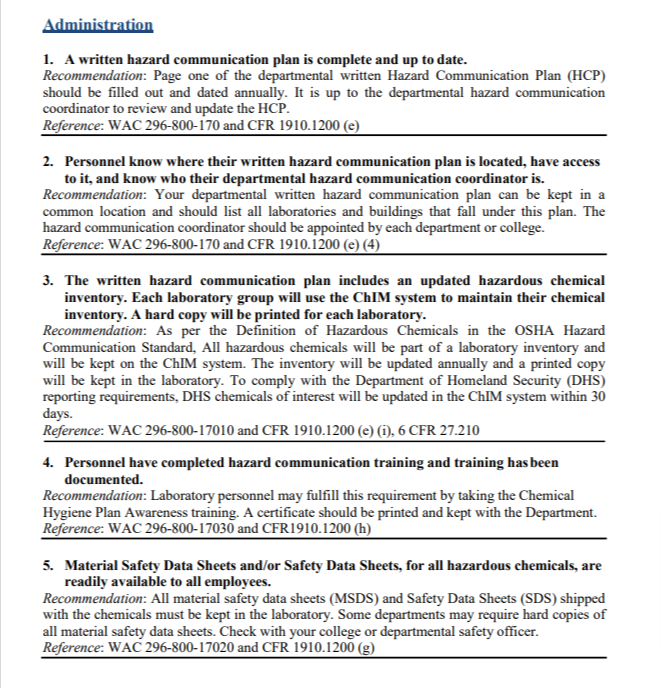
cwu.edu
DownloadHazard Communication Program Plan for Employers
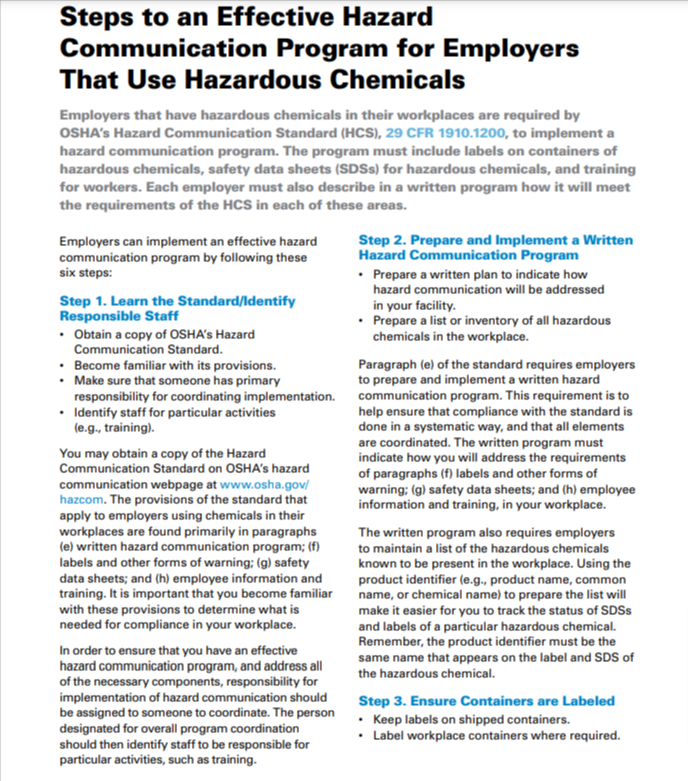
osha.gov
DownloadHazard Communication Plan for Temporary Workers
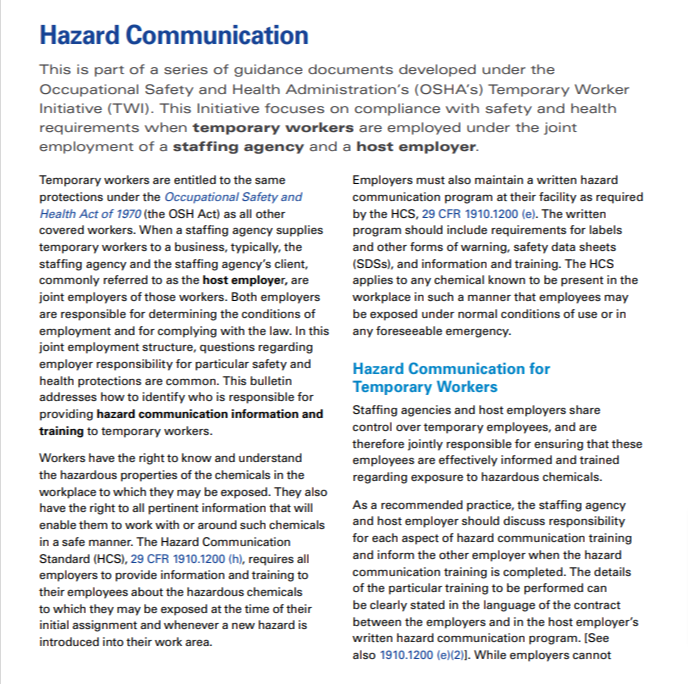
osha.gov
DownloadSample Written Hazard Communication Plan
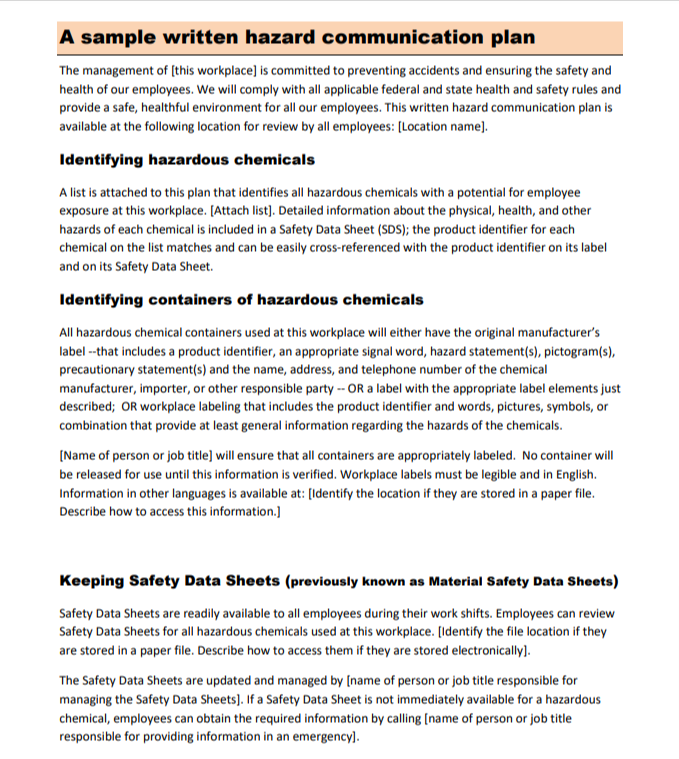
osha.oregon.gov
Download7+ Hazard Communication Plan Examples
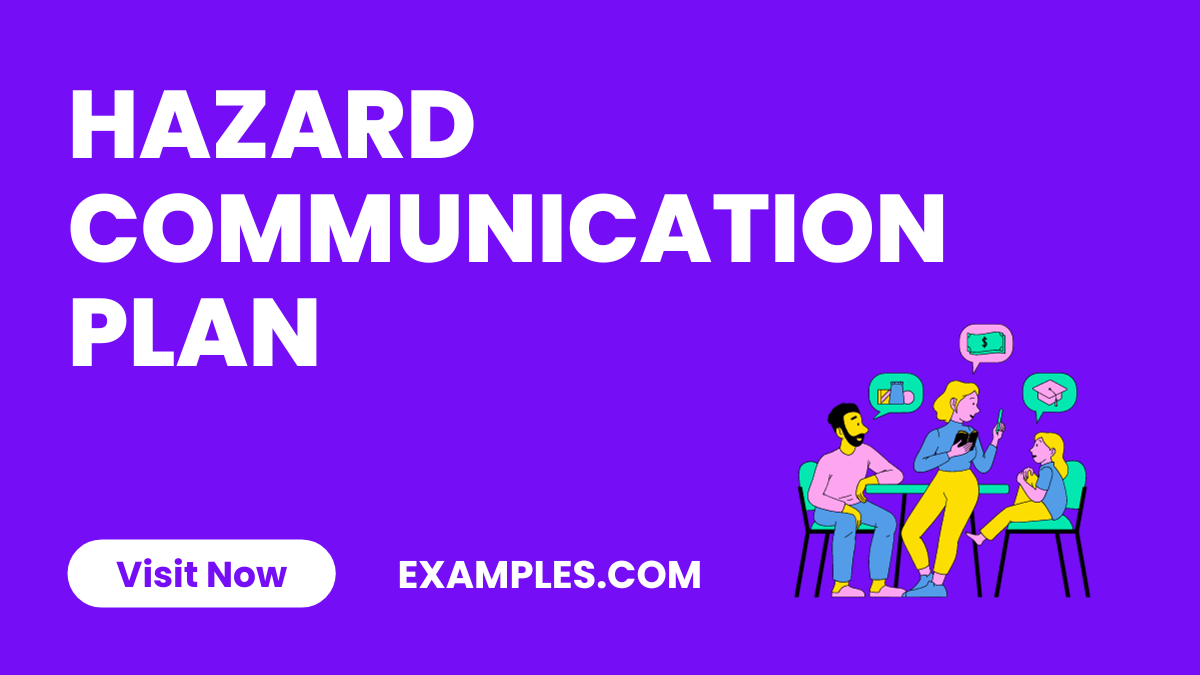
The Hazard Communication Plan serves as a vital guide for navigating complex relationship dynamics. It provides a detailed exploration of the intricacies of communication, specifically highlighting various communication examples that can lead to misunderstandings and conflict in relationships. This comprehensive guide delves into the nuances of verbal and non-verbal cues, offering insights on how these can inadvertently contribute to emotional distance and examples in miscommunication. By understanding these examples, couples can develop more effective communication strategies, leading to healthier, more resilient relationships.
Download Hazard Communication Plan Bundle
Hazard Communication Plan

The Hazard Communication Plans tailored to different workplace scenarios. It provides comprehensive guidelines for handling, storing, and disposing of hazardous chemicals safely. The plans emphasize the importance of clear labeling, accessible Safety Data Sheets (SDSs), and proper employee training to ensure workplace safety. These examples serve as a valuable resource for organizations looking to implement or refine their own hazard communication strategies.
Hazard Communication Program Plan

The Hazard Communication Program Plan is a detailed resource for workplace safety, focusing on managing hazardous chemical exposure. The plan encompasses vital elements such as chemical inventory management, safety data sheets, labeling systems, employee training, exposure control, and emergency response procedures. It emphasizes compliance with OSHA’s standards, aiming to educate and protect employees from chemical hazards. This guide is an essential tool for creating a safer workplace environment.
Hazard Communication Plan in Construction

The article Hazard Communication Plan in Construction focuses on the critical aspects of hazard communication within the construction industry. It outlines the significance of developing a robust Hazard Communication Plan to ensure workplace safety and compliance with regulations. The guide includes practical examples, strategies for effective communication skills of hazards, and methods for training employees about the potential risks associated with construction materials and chemicals. This resource is essential for construction professionals seeking to enhance safety protocols in their projects.
Hazard Communication Plan HR Template
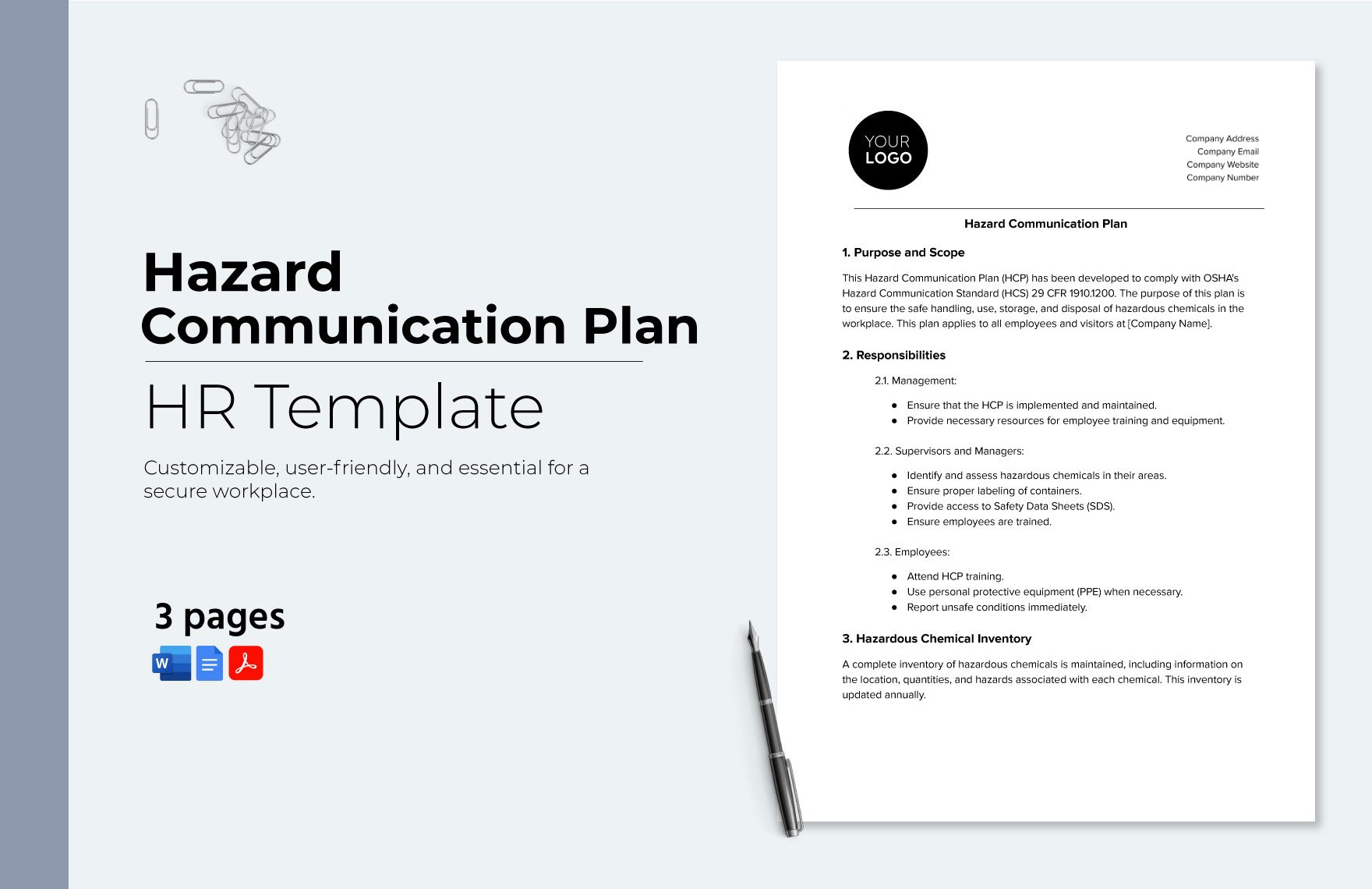
Construction Hazard Communication Plan Template in Word, Google Docs
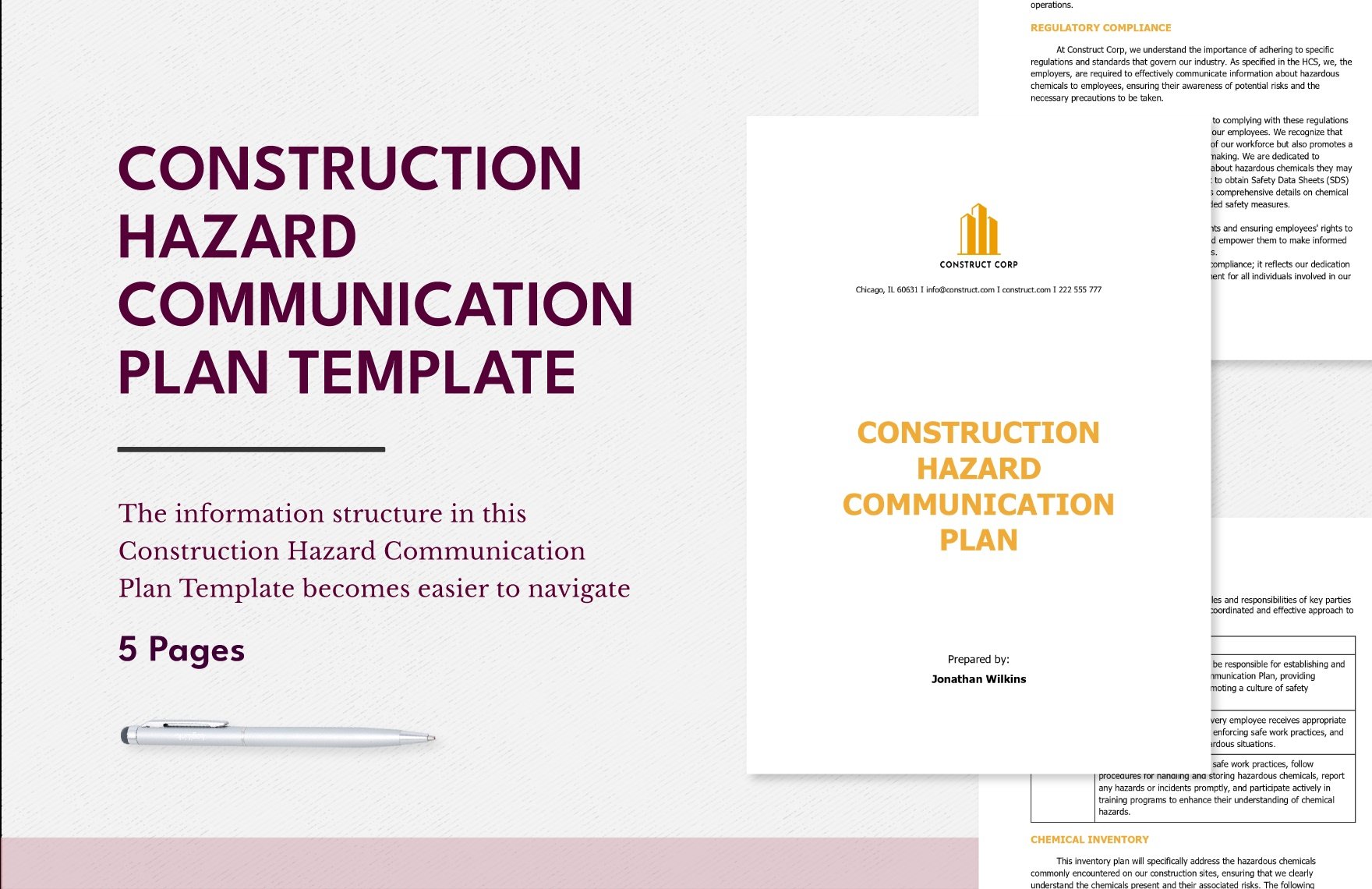
Hazard Communication Plan Example

cwu.edu
Hazard Communication Program Plan for Employers

osha.gov
Hazard Communication Plan for Temporary Workers

osha.gov
Sample Written Hazard Communication Plan

osha.oregon.gov
How to Write Hazard Communication Plan?
Writing a Hazard Communication Plan requires a structured approach to ensure it effectively addresses communication barriers in relationships.
Identify Communication Challenges: Start by recognizing common issues like Emotional Disconnection and Non-Verbal Misunderstandings. Analyze how these affect your relationship.
Set Clear Goals: Define what you aim to achieve with this plan. Goals might include improving understanding, resolving conflicts, or rebuilding trust.
Develop Strategies: For each identified issue, create specific strategies. This could involve practicing active listening, scheduling regular check-ins, or learning conflict resolution techniques.
Incorporate Feedback Mechanisms: Ensure the plan allows for both partners to provide feedback. This could be through regular discussions or written feedback.
Review and Update Regularly: Relationships evolve, so should your communication plan. Regularly assess its effectiveness and make necessary adjustments.
Seek Professional Guidance if Needed: Don’t hesitate to consult a relationship counselor, especially for complex issues like Trust Erosion or Intimacy Challenges.
Required Elements for a Hazard Communication Plan
A successful Hazard Communication Plan should incorporate several key elements to effectively manage communication in relationships:
Clear Identification of Communication Barriers: Recognize specific issues like Miscommunication in Couples or Expressive Barriers.
Defined Objectives: Set clear, achievable goals to improve communication, such as enhancing understanding or resolving conflicts.
Strategies and Solutions: Develop actionable strategies for each identified issue. This could include techniques like active listening or conflict resolution methods.
Feedback and Adaptation Mechanism: Include a system for regular feedback, allowing both partners to express their thoughts on the communication dynamics.
Review and Revision Process: Establish a regular review process to assess the effectiveness of the plan and make necessary adjustments.
External Support Options: List resources like counseling services or communication workshops, particularly for more complex issues.
Accessibility and Simplicity: Ensure the plan is easy to understand and implement for both partners.
What’s in a Written Hazard Communication Program?
A written Hazard Communication Program (HCP) is an essential component of workplace safety, particularly in industries dealing with hazardous chemicals. It’s not only a regulatory requirement under OSHA’s Hazard Communication Standard (HCS) but also a critical tool for ensuring the health and safety of employees. This guide delves into the key elements that constitute an effective and comprehensive HCP, specifically optimized for the term “Hazard Communication Plan.”
Identification of Chemical Hazards
The first step in any HCP is the identification of chemical hazards present in the workplace. This involves:
Conducting a thorough inventory of all chemicals used, stored, or produced.
Evaluating the potential hazards of these chemicals through Safety Data Sheets (SDSs).
Safety Data Sheets (SDSs)
Each hazardous chemical must have an associated SDS, which provides detailed information on:
Chemical composition.
Potential hazards (health, fire, reactivity).
Safe handling and storage practices.
Emergency and first-aid procedures.
Labeling of Hazardous Chemicals
Proper labeling is a critical aspect of hazard communication. Labels should include:
Product identifier (name of the chemical).
Signal words (like “Danger” or “Warning”).
Hazard statements, pictograms, and precautionary statements.
Supplier information (name, address, and telephone number).
Employee Training and Information
A comprehensive HCP must include a detailed training program, ensuring that all workers:
Understand the hazards associated with the chemicals they work with.
Know how to use and interpret labels and SDSs.
Are aware of the protective measures and equipment available to them.
Written Hazard Communication Program
The written program should outline the organization’s procedures for:
Maintaining and accessing SDSs.
Labeling containers.
Employee training.
Informing employees of non-routine tasks involving hazardous chemicals.
Procedures to follow during emergencies involving hazardous chemicals.
Non-Routine Tasks
The program must address procedures for tasks that are not performed regularly but may expose employees to different hazards.
Informing Contractors and Non-Employee Workers
Ensuring that contractors and other non-employee workers on-site are informed about the hazards and safety measures.
Program Accessibility
The written HCP should be readily accessible to all employees, ensuring that they can reference it whenever necessary.
Regular Updates and Reviews
The HCP should be reviewed and updated regularly to reflect any changes in the workplace or updates in regulatory standards.
An effectively written Hazard Communication Program is integral to workplace safety. It empowers employees with the knowledge and tools to handle hazardous chemicals safely, ensuring a safer, more compliant, and health-conscious work environment.
The University of Iowa’s Environmental Health & Safety page on Hazard Communication program provides an in-depth guide to protect against hazards associated with workplace chemicals. It emphasizes employees’ right to know and understand these hazards. Key elements include maintaining a chemical inventory, accessibility to Safety Data Sheets (SDSs), proper labeling of chemical containers, and providing necessary training and protective equipment. This comprehensive approach aims to safeguard health in the workplace.
Communication Plan outlines comprehensive measures to ensure the safety of faculty, staff, students, and visitors when working with hazardous chemicals. The plan includes responsibilities of university leadership, employees, and safety coordinators. It covers chemical inventory, labeling requirements, and safety data sheets, providing clear guidelines on chemical identification, employee training, and medical surveillance. This detailed plan is an integral part of MSU’s commitment to maintaining a safe working environment. For more in-depth information.


